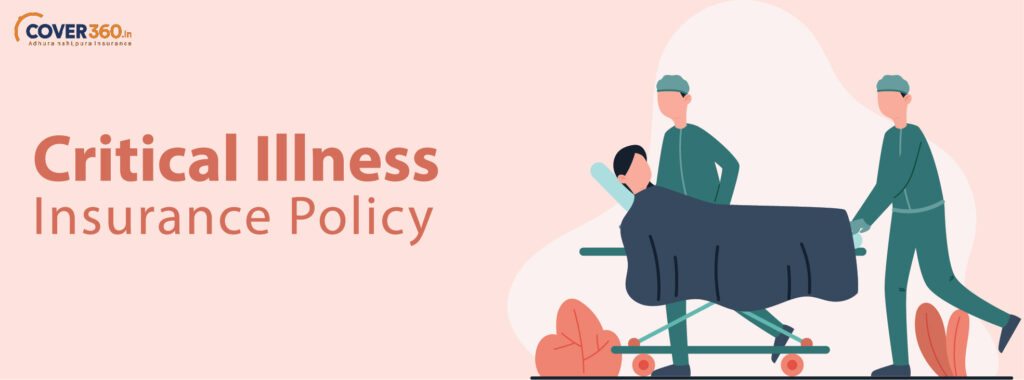A critical illness insurance policy is a type of insurance plan that covers life-threatening diseases, such as cancer, lung disease, kidney failure, liver failure, stroke, multiple sclerosis, etc. The list of critical diseases covered under the policy is listed in the policy document. Critical illness policy provides a lump sum benefit that can be used for paying the cost of treatment toward specific illnesses recuperation expenses. The lump sum amount is paid as soon as the policyholder is diagnosed with a critical illness listed in the plan.
What else? The lump sum amount is paid in a one-time settlement, and further hospitalization costs are not covered. If you are left with a certain amount after paying the treatment costs, you can then use it to pay off debt or any other bills.
Let’s dig deeper into the critical illness cover with an example.
Mr. Sharma was diagnosed with lung cancer. He had to undergo a surgery, therapy, and medications. The cost of treatment was 7.5 lakh. Mr. Sharma had already bought a critical illness cover for himself with a sum insured of Rs. 7 lakh. So, most of the treatment expenses were covered by the critical illness insurance policy and he had to pay only 50 thousand from his saving. If Mr. Sharma had a policy with a higher sum insured, then the entire treatment costs could get covered.
Policy Coverage Limitations
Coverage under a critical illness insurance policy varies depending on the plan you have. Don’t just assume the benefits. Instead, understand all the benefits before buying critical insurance.
It is important to know that if you are having a critical insurance policy for cancer, the possibility is that it may not cover the expense incurred in coronary heart disease treatment, brain tumor, or cataract. So, keeping a list of critical illnesses or treatments for which your insurance company will not reimburse you is very paramount. It is advisable to read your policy documents before purchasing a critiacl insurance policy.
Buying a Critical Insurance Policy
Coverage for Pre-existing Diseases – A pre-existing disease is a type of ailment that starts before a person’s health insurance is bought. Some of the best critical illness insurance provides coverage for almost every pre-existing disease after the waiting period is over. However, there are some policies that do not provide coverage for pre-existing diseases. In order to avoid any trouble in the future, it is important to assess the coverage clause for pre-existing diseases in advance.
In-built Coverage – Besides financial support benefits during a medical crisis, some health insurance companies offer several built-in benefits as well. The perks under in-built coverage include complimentary medical check-ups, personal accident cover, emergency cash assistance, and child education benefits.
Age of the Policyholder – Age is a crucial factor. The best critical illness insurance covers the health risk of age-old people – above 50 years of age. These people are more vulnerable to critical illnesses when compared with individuals who are in their early 20s or 30s. That’s why the insurance premium for elderly people is comparatively higher. Insurers provide comprehensive insurance to cover the health risks of old people.
Sub Limits – Sub-limit is a monetary cap placed by health insurance companies on your health insurance claim. It is the form of a predetermined limit on the claim amount for a specific disease. In some cases, the sub-limit is a specific amount or percentage of the sum insured specified by an insurer. It has direct repercussions on the amount that your insurer will have to bear.
Say, for example, your bills during a surgery come to Rs. 1.25 lakh. And your critical illness cover has a sub-limit of Rs. 95,000 for the specific treatment. In this case, you will have to shell out money from your own pocket to pay the remaining amount. It is therefore important to be aware of the sub-limit clause before choosing a critical illness insurance policy.
Last but Not Least
Cover under a critical illness insurance policy lapses once the insurance provider makes the payment. Typically, the insurer pays the lump sum amount post survival period of 30 days after contracting the illness. Further, you can buy more than one critical illness cover and each policy will pay for the critical illness.
